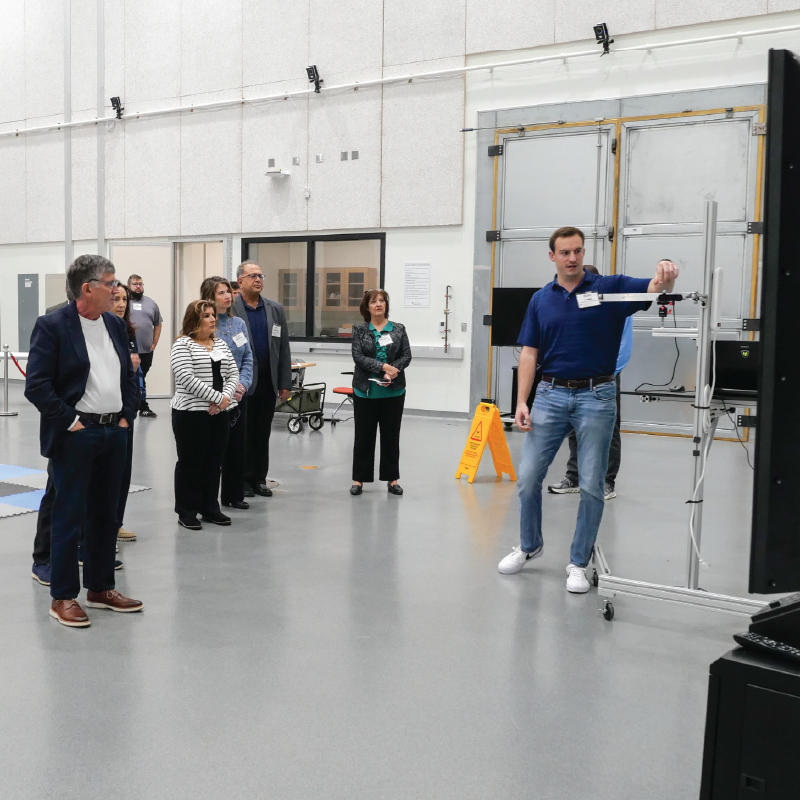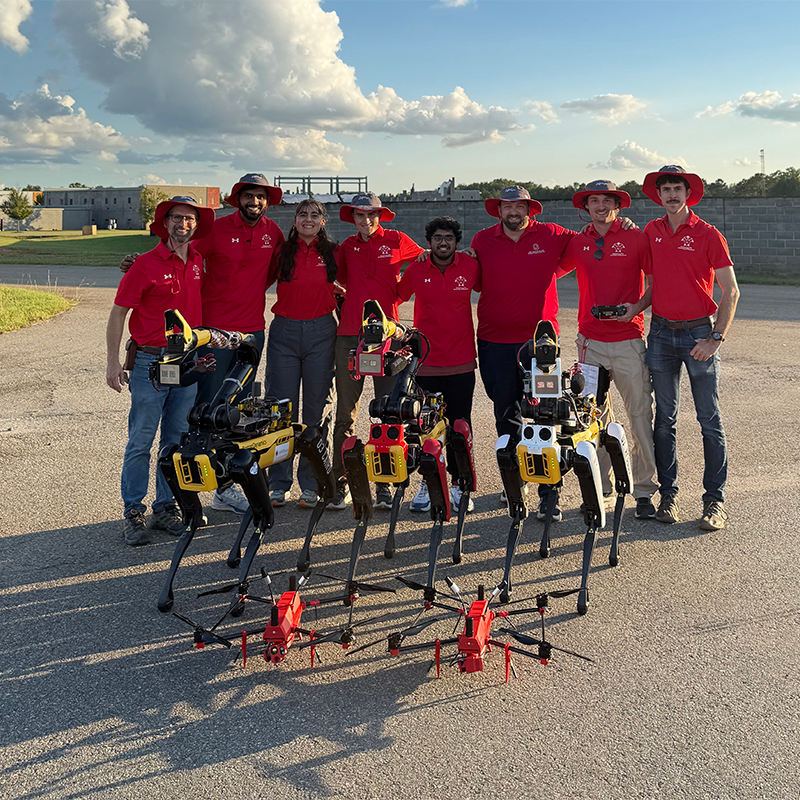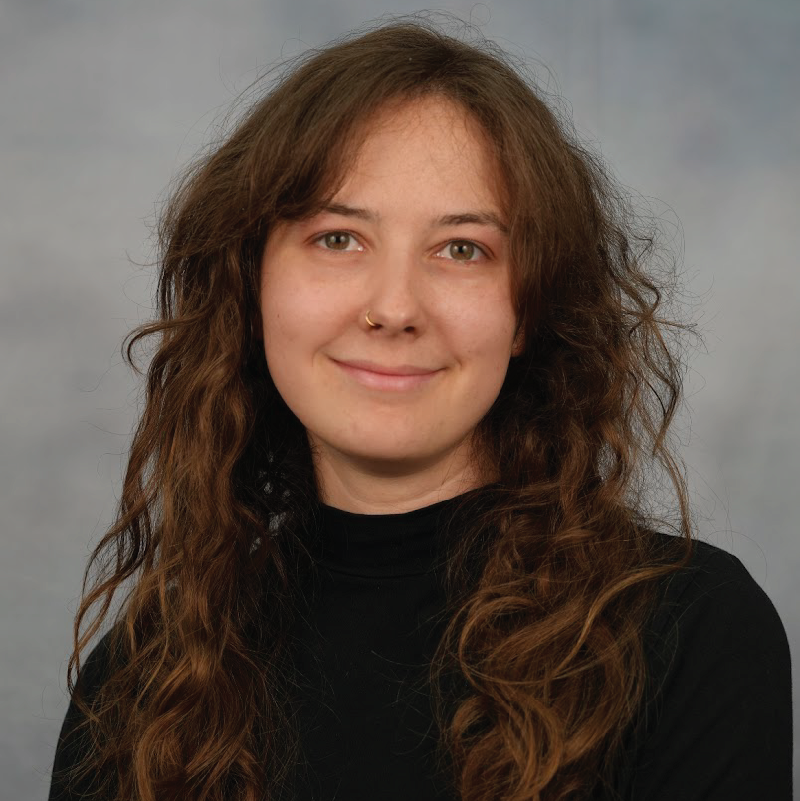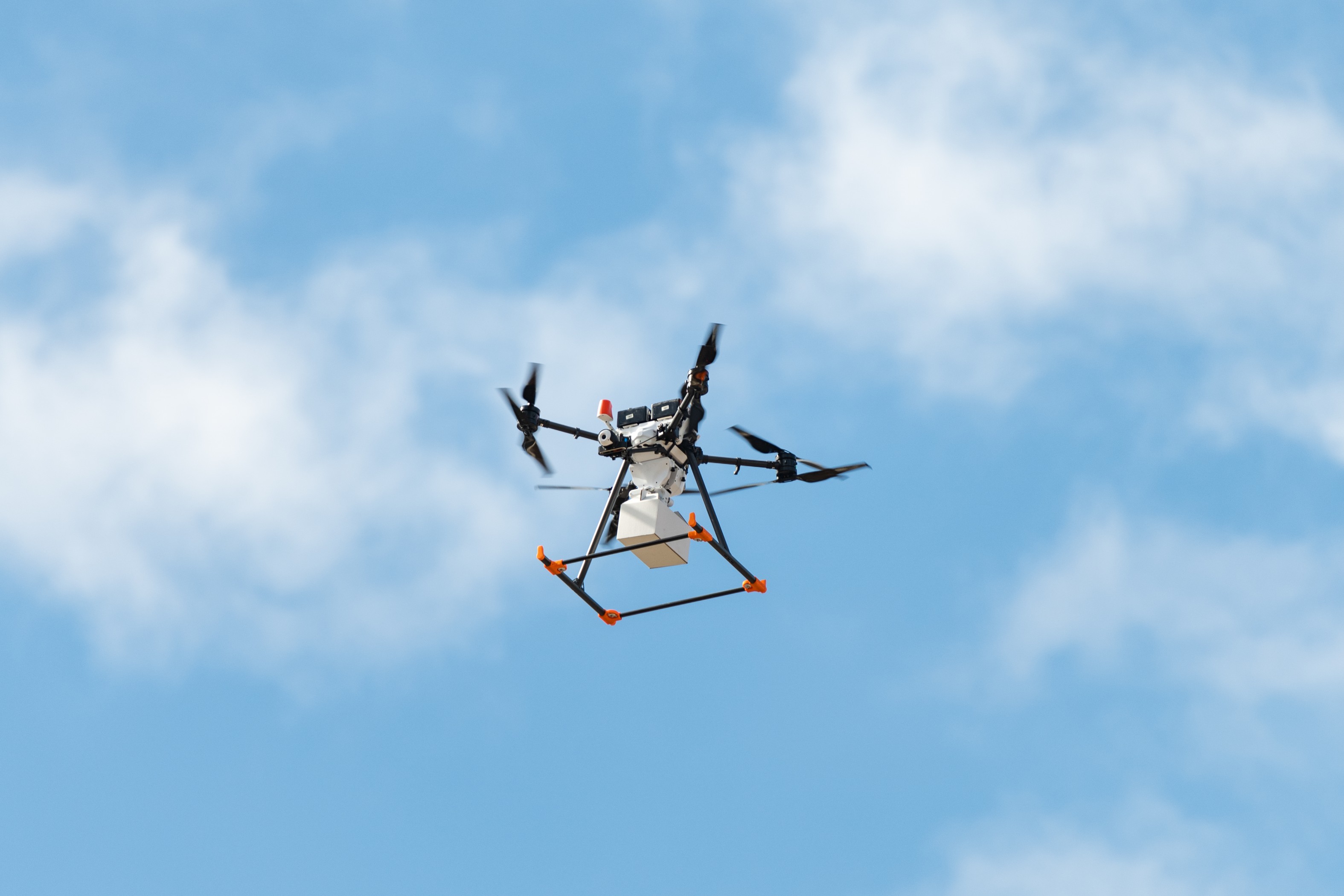News Story
Local nonprofit visits the SMART building and MATRIX lab
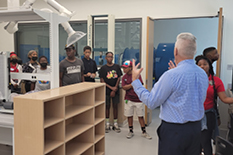
Southern Maryland nonprofit organization LEAP Forward visited the SMART building and MATRIX lab recently. The organization promotes STEM career options to underserved and underexposed youth, according to their Facebook page.
“I was introduced to The SMART building and MATRIX lab by my National Society of Black Engineers Chapter,” 11th grader Christian said. “When given the opportunity to visit I was extremely excited because of how new the building was and how close it was to the base. When I found out about the SMART building, I just had to see how they were going to further advance STEM.” The NSBE Jr. Chapter, Creative and Striving Hard to Succeed (CASH), will celebrate 10 years in January 2023.
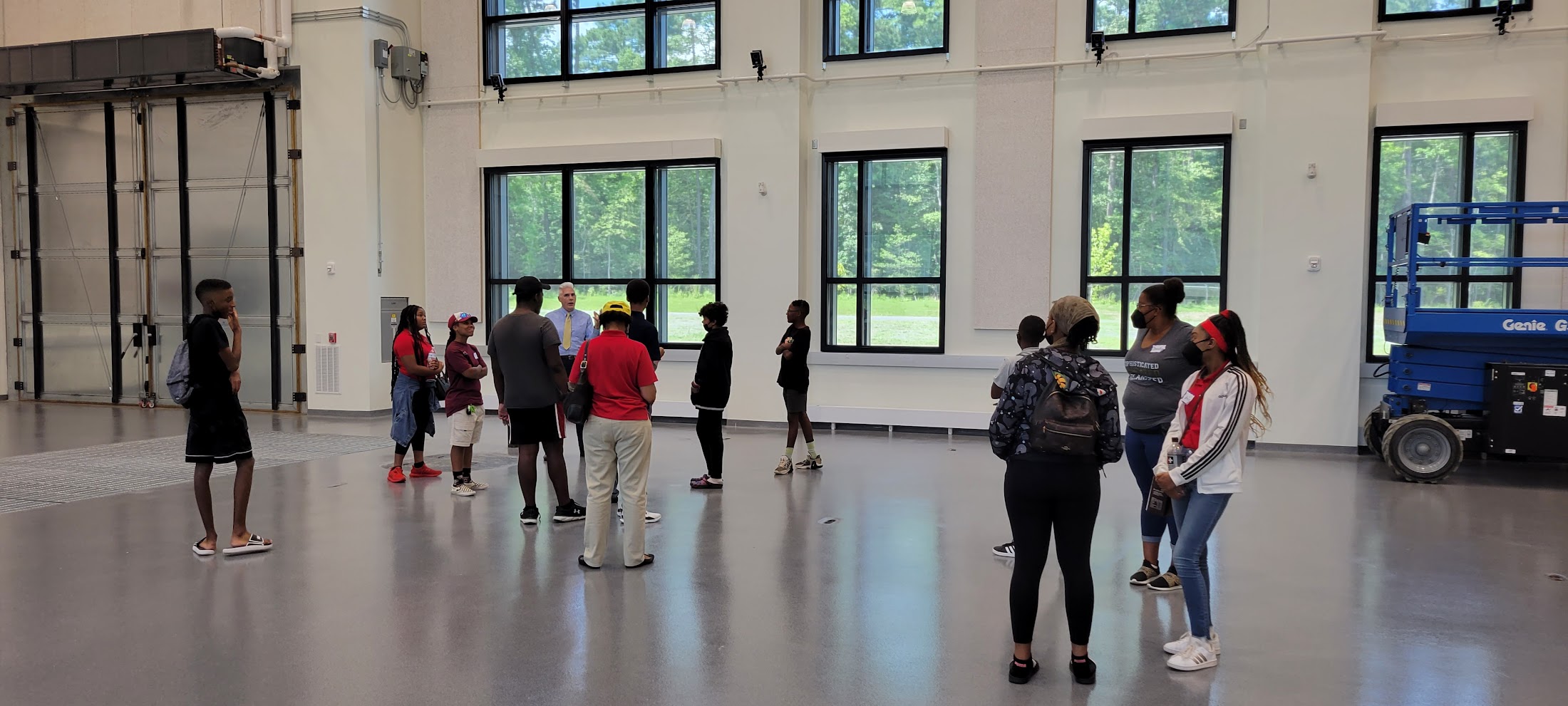 Matt Scassero, MATRIX Lab Director of Research, Innovation and Outreach, took a group of kids in the organization from Calvert and St. Mary’s counties on a tour of the SMART building and MATRIX lab. Students got to see the various labs and workshops, which are open for research and teaching.
Matt Scassero, MATRIX Lab Director of Research, Innovation and Outreach, took a group of kids in the organization from Calvert and St. Mary’s counties on a tour of the SMART building and MATRIX lab. Students got to see the various labs and workshops, which are open for research and teaching.
“I would love to go back to observe more of the building with my family so they can see for themselves what I would like to learn more, and possibly look into a summer program there,” Lena, a member of the group, said.
USMSM does plan to offer this year’s STEM summer camp in the SMART building again next year.
6th grader Kenny said he wanted to visit the SMART building to see the wind tunnel in the Mechanical Engineering Lab. He was also excited about the MATRIX’s Hydrology Lab.
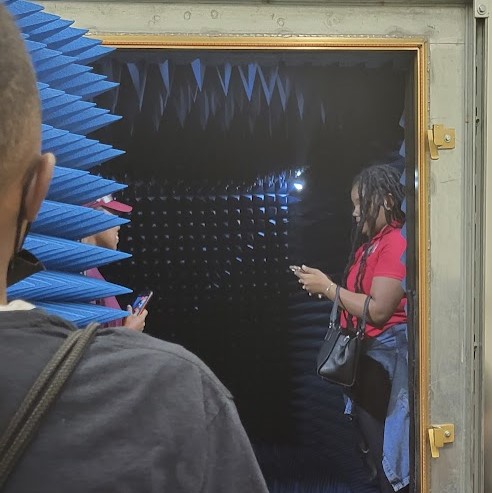 The group spent a lot of time in the MATRIX lab’s Anechoic Chamber, which is an electronic clean room. When the door is shut, the room blocks cell phone signals and sounds. We kept the door open for the group, but sounds are still muffled when you go inside.
The group spent a lot of time in the MATRIX lab’s Anechoic Chamber, which is an electronic clean room. When the door is shut, the room blocks cell phone signals and sounds. We kept the door open for the group, but sounds are still muffled when you go inside.
Another member of the group, Anjelynn, said the SMART building was her favorite part about the visit. “It was so intricate and interesting to see, especially the rooms,” Anjelynn told us.
After the tour, the kids participated in a “brains-on” activity called Project Titanic LEAP. Matt divided them into two groups. Each group’s mission was to find traces of organic life on Saturn’s largest moon, Titan. They had to design something that would be able to do that. They had several factors to consider, including:
- Titan’s distance from Earth, about 746 million miles.
- Titan’s temperature, which is around minus 290 degrees Fahrenheit at the surface.
- Titan’s atmosphere, which is 4.5 times denser than Earth’s.
- Titan’s thick crust of ice, which covers the subsurface water that may harbor life.
Because of Titan’s distance from Earth, communication takes a long time.
“I learned about how a rover on a different planet or moon past Saturn could not transmit a signal to earth in less than one hour because of relativity,” Christian said.
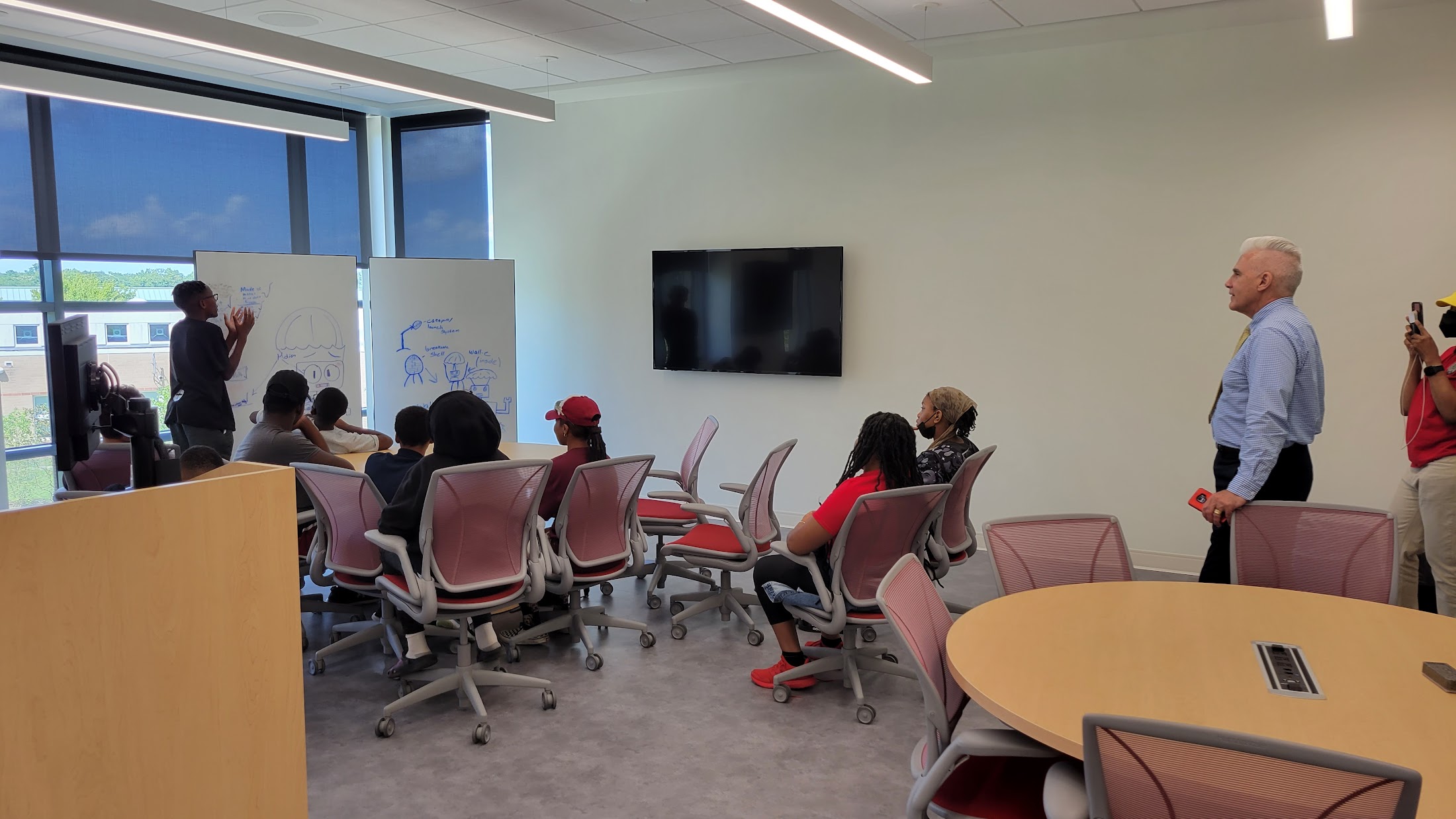 Both groups decided pre-programmed instructions would be the fastest way to communicate with their designs.
Both groups decided pre-programmed instructions would be the fastest way to communicate with their designs.
In addition, group one decided to use a catapult and parachute system to get their design to Titan’s surface. Spiked wheels would crack Titan’s ice, and heat and motion sensors would detect signs of life.
 Group two wanted to lower their design onto Titan’s surface using a cable. They also added spiked wheels, and included a camera, sensor, extra battery, and storage space.
Group two wanted to lower their design onto Titan’s surface using a cable. They also added spiked wheels, and included a camera, sensor, extra battery, and storage space.The goal of the activity was to get the kids thinking, and show that diversity is key to success. Every project needs people from different backgrounds, with different experiences and knowledge, in order to find the best solutions.
“I learned the most from the brain exercise, that great ideas can come from anywhere, even from the quietest person in the room,” Kenny said.
Earlier in the day, the group toured the Naval Air Station Patuxent River, visited The Patuxent River Naval Air Museum, and toured the St. Mary’s County Airport. The Patuxent Partnership helped organize the trip.
“I learned a lot more about what the SMART building, the base and the airport had to offer, such as internships for me, and their ideas for our future,” Lena said.
LEAP Forward provides underrepresented youth with social and cultural enrichment activities like seminars, field trips, and support services.
According to their website, their goal is to create a generation of L. E. A. P. E. R. S. - Learning, Excelling, Achieving, Performing, Exploring, and Rising Students.
The acronyms used in this article:
SMART - Southern Maryland Autonomous Research and Technology
MATRIX - Maryland Autonomous Technologies Research Innovation and eXploration
STEM - Science, Technology, Engineering and Mathematics
USMSM - University System of Maryland at Southern MarylandPublished August 19, 2022



